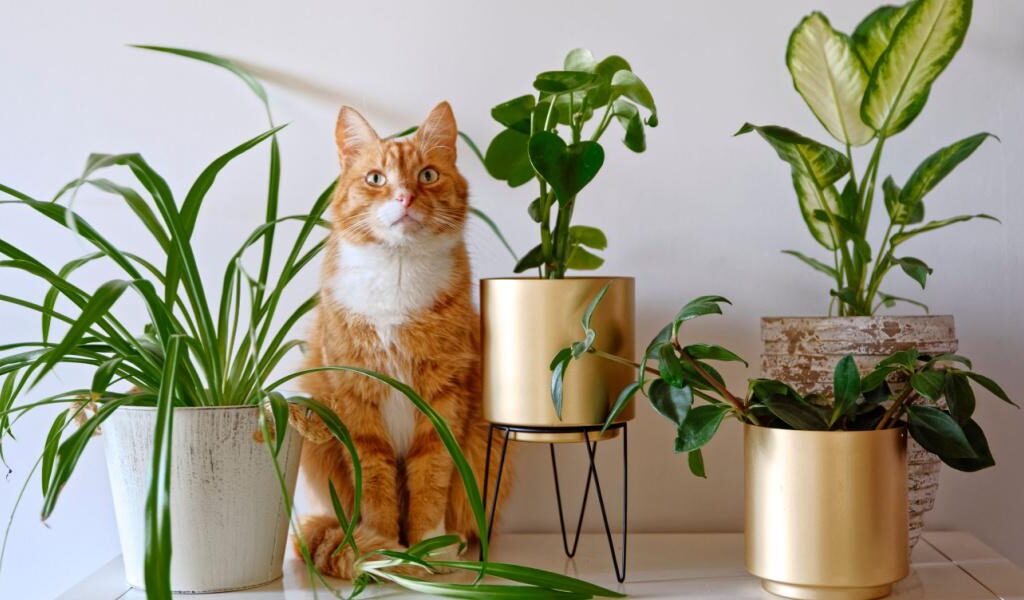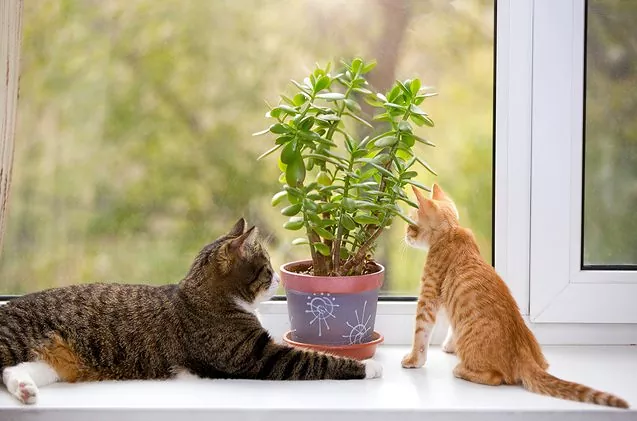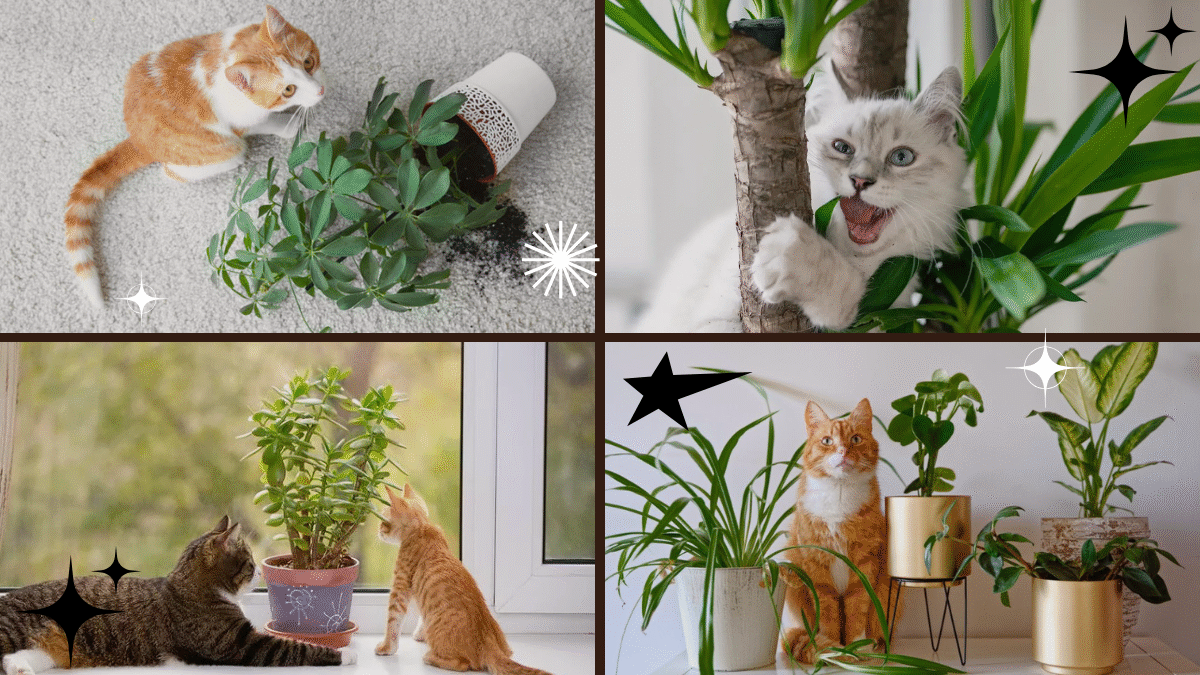Cats are wonderful companions — independent, curious, and endlessly entertaining. But if you’re a plant lover too, you’ve likely faced the frustrating challenge of keeping your feline friend away from your precious greenery. Whether it’s a curious nibble, a toppled plant pot, or freshly dug-up soil, many cats can’t resist exploring your indoor jungle or backyard garden.
Luckily, there are smart, humane, and effective ways to deter cats from turning your plant collection into their personal playground. In this guide, we’ll share practical strategies, natural repellents, and cat-safe tips for protecting both your plants and your pets.

Why Do Cats Love Plants?
Before jumping into solutions, it’s helpful to understand why cats are so drawn to plants in the first place. Here are some common reasons:
- Curiosity: Cats naturally explore their surroundings, especially if something is new or moving.
- Texture and Scent: Certain leaves and soil textures are appealing to cats’ sensitive paws and noses.
- Digging and Chewing: Some cats dig in soil to simulate hunting behavior, while others chew on leaves to aid digestion or relieve boredom.
- Litter Box Confusion: Cats may mistake potted plant soil for a convenient indoor litter box.
Understanding these behaviors can help you pick the right deterrents tailored to your cat’s instincts.
The Importance of Keeping Cats Away from Plants
Not only is it frustrating to find your houseplants dug up or gnawed on, but it can also be dangerous for your cat. Many common houseplants and garden varieties are toxic to cats, including:
- Lilies
- Aloe vera
- Dieffenbachia (Dumb Cane)
- Pothos
- Sago Palm
- Peace Lily
Ingesting even a small amount of these plants can cause vomiting, diarrhea, lethargy, and more serious health issues. Keeping cats away from your plants is essential for their safety and your peace of mind.

Practical Ways to Keep Cats Away from Your Plants
1. Move Plants Out of Reach
The simplest method is to place your plants in areas your cat can’t access:
- Use high shelves, plant hangers, or wall-mounted planters.
- Create a dedicated plant room with a closed door.
- Invest in hanging baskets for trailing or small potted plants.
This physical separation is often the most effective, especially for determined cats.
2. Use Natural Deterrent Scents
Cats have sensitive noses and tend to avoid strong or unpleasant scents. You can safely deter them by placing natural, cat-repellent items around your plants:
- Citrus Peels: Scatter orange, lemon, or lime peels on the soil surface.
- Vinegar Spray: Lightly mist diluted white vinegar (50/50 mix with water) around pots.
- Essential Oils: Use cat-safe deterrent sprays with lavender, citronella, or eucalyptus oils (never apply oils directly to plants or your cat).
- Coffee Grounds: Sprinkle used grounds around your plants — the smell is unappealing to cats and also benefits some plants as a fertilizer.
Note: Always test any spray on a small part of the plant to ensure it won’t damage the foliage.
3. Create Physical Barriers
Preventing cats from accessing soil or leaves makes plants less enticing:
- Decorative Pebbles or Pinecones: Cover the soil surface with small stones or pinecones to deter digging.
- Chicken Wire or Mesh: Cut and shape mesh to fit over the soil of larger planters.
- Cloche Covers: Use decorative plant cages or glass cloches for fragile plants.
These options prevent cats from reaching the soil while adding a decorative touch to your plant displays.
4. Provide Alternatives for Your Cat
If your cat is drawn to your plants out of boredom, offer more appropriate entertainment:
- Cat Grass (Wheatgrass or Oat Grass): Safe for nibbling, these grasses satisfy your cat’s need to chew on greenery.
- Catnip Plants: Place a potted catnip plant away from your prized houseplants as a feline-friendly distraction.
- Interactive Toys: Provide puzzle feeders, feather wands, and climbing trees to keep your cat mentally and physically stimulated.
A satisfied, entertained cat is far less likely to mess with your plants.
5. Train Your Cat Gently
Cats can be trained — with patience and consistency. Use gentle deterrents to teach them to stay away from plant areas:
- Double-Sided Tape: Apply to plant stand edges or nearby furniture. Cats dislike sticky surfaces.
- Aluminum Foil: Place around plant pots — the texture and crinkly sound deter most cats.
- Motion-Activated Air Sprays: Devices like PetSafe SSSCAT emit a harmless burst of air when triggered by motion.
Always avoid using punishment like yelling or physical discipline, as it can damage your bond with your cat.

Outdoor Plant Protection Tips
If you have a backyard garden and neighborhood cats are a problem, these tactics can help:
- Fencing: Install low, chicken wire fences around beds.
- Scent Repellents: Use commercial cat repellents or sprinkle cayenne pepper or citrus peels around garden borders.
- Ultrasonic Repellers: These devices emit high-pitched sounds that deter cats without harming them.
- Plant Cat-Deterring Species: Include plants like lavender, rosemary, or rue in your garden — cats tend to avoid them.
Signs Your Cat Has Ingested a Toxic Plant
Despite your best efforts, accidents happen. Know the signs of plant poisoning in cats:
- Drooling
- Vomiting
- Diarrhea
- Loss of appetite
- Lethargy
- Difficulty breathing
- Swollen mouth or gums
If you suspect your cat has ingested a toxic plant, contact your veterinarian immediately or call an emergency animal poison hotline.

Cat-Safe Houseplant Alternatives
If you’re a plant parent who loves having greenery indoors but wants to avoid risks entirely, choose cat-safe plants like:
- Spider Plant
- Boston Fern
- Areca Palm
- Calathea
- Peperomia
- Prayer Plant
- Baby Rubber Plant
These plants are generally non-toxic and pet-friendly, offering peace of mind in a feline-filled home.
Conclusion
Keeping your cats away from your plants requires a mix of smart placement, natural deterrents, alternative entertainment, and gentle training. By understanding why cats are drawn to plants and addressing those instincts in a safe, humane way, you can protect both your cherished greenery and your curious companion.
Whether you hang your plants out of reach, cover the soil with pebbles, or grow a special patch of cat grass just for them, it’s entirely possible to have a beautiful home filled with plants and happy, healthy cats too.





Leave A Comment